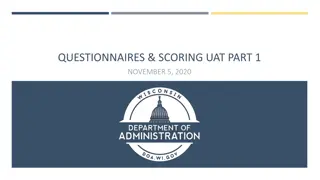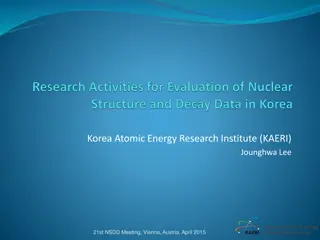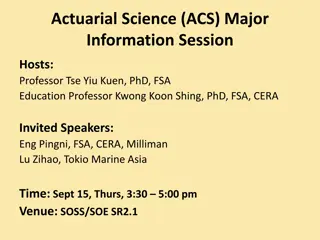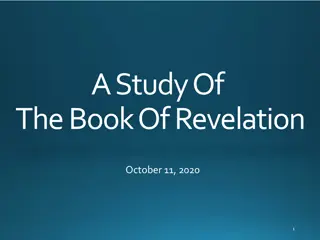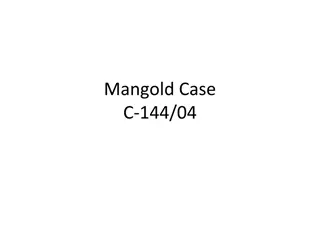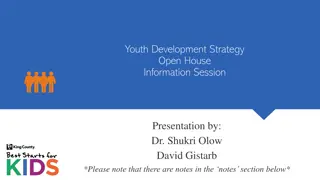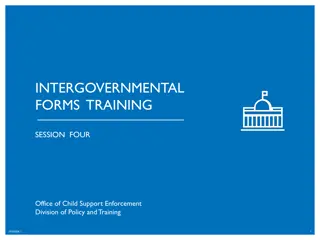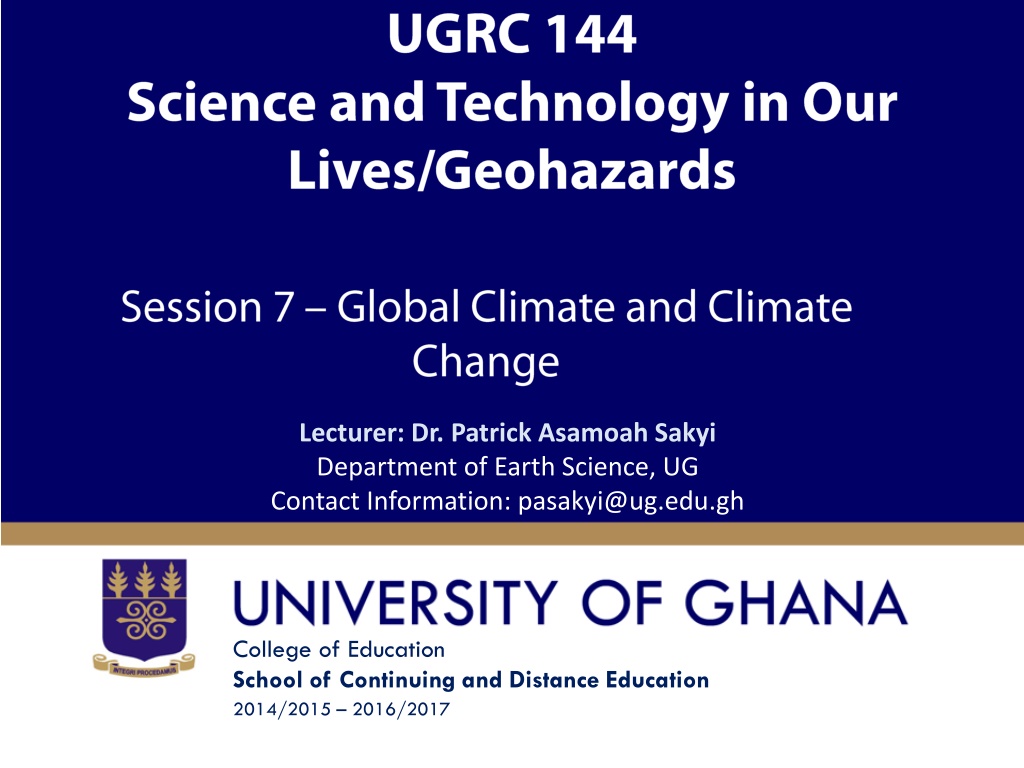
Understanding Past Climate Change: Evidence and Impacts
Explore the evidence of past climate change, from geological to chemical indicators, and learn about the impacts of these changes on our planet. Gain insights into how weather differs from climate and discover the factors influencing global shifts in temperature over time.
Download Presentation

Please find below an Image/Link to download the presentation.
The content on the website is provided AS IS for your information and personal use only. It may not be sold, licensed, or shared on other websites without obtaining consent from the author. If you encounter any issues during the download, it is possible that the publisher has removed the file from their server.
You are allowed to download the files provided on this website for personal or commercial use, subject to the condition that they are used lawfully. All files are the property of their respective owners.
The content on the website is provided AS IS for your information and personal use only. It may not be sold, licensed, or shared on other websites without obtaining consent from the author.
E N D
Presentation Transcript
Lecturer: Dr. Patrick Asamoah Sakyi Department of Earth Science, UG Contact Information: pasakyi@ug.edu.gh College of Education School of Continuing and Distance Education 2014/2015 2016/2017
Session Overview This session introduces you to global climate and the various evidences that suggest that, compared to the present time, there have been changes in global climate. The earth's climate is continually changing, fluctuating between ice ages and warmer periods. The modern debate on climate change is really about human impact on the Earth's dynamic changing climate. This session will link natural and human activities to the Earth's changing climate. Slide 2 Dr. Patrick A. Sakyi, Dept. of Earth Science
Session Outline The key topics to be covered in the session are as follows: Topic One Evidence of Past Climate Topic Two Ice Age and their possible causes Topic Three Greenhouse effect and global warming Topic Four Contribution of humans to the greenhouse effect Topic Five Effects of global warming Topic Six - Measures adopted to reduce global warming Slide 3 Dr. Patrick A. Sakyi, Dept. of Earth Science
Reading List Chapter 9 of Environmental Geology 4th Edition, Wm. C. Brown Publishers by Carla W Montgomery (1995) Chapter 16 of Environmental Geology. 7th Edition. Prentice Hall by Edward A. Keller (1996). Chapter 11 of Geology and the Environment. 3rd Edition. Brooks/Cole Thomson Learning by Pipkin, B. W. and Trent, D. D. (2001) Read Unit 2, Sections 1&2 of UGRC 140 II Geohazards Institute of Continuing and Distance Education. Slide 4 Dr. Patrick A. Sakyi, Dept. of Earth Science
Topic One EVIDENCE OF PAST CLIMATE Slide 5 Dr. Patrick A. Sakyi, Dept. of Earth Science
Evidence of Past Climate Climate and Weather Weather is the short term, normal day-to-day, atmospheric conditions which prevail at a given place at a given time The weather can be described as; stormy, rainy, hot, windy, humid, and sunny. Climate is the "average weather" of an area over a much longer time span, often hundreds or thousands of years Slide 6 Dr. Patrick A. Sakyi, Dept. of Earth Science
Evidence of Past Climate The four main types of evidence indicating climatic conditions that existed in the past are; Geological (use of aerial photos reveal desert areas that were previously occupied by vegetation). Geomorphological (e.g. features such as river deltas also show where rivers entered the ocean or a lake. ) Chemical evidence shows variations in the ratios of isotopes in fossils present in sediments and sedimentary rocks and ocean sediment cores) Paleontological evidence shows changes in the geographical distribution of fossils (dead plants and animals Dr. Patrick A. Sakyi, Dept. of Earth Science Slide 7
Topic Two ICE AGE AND THEIR POSSIBLE CAUSES Slide 8 Dr. Patrick A. Sakyi, Dept. of Earth Science
Ice Age and their possible causes Ice Age refers totime in recent geologic past when extensive continental glaciers covered large areas than they do now. It is caused by fluctuations in the amount of incoming solar radiation are the most likely cause of ice age, or locking of incoming solar radiation by particles such as volcanic dust or sulphuric-acid droplet in the atmosphere. This can result in the cooling which can induce the start of an ice age. Slide 9 Dr. Patrick A. Sakyi, Dept. of Earth Science
Topic Three GREENHOUSE EFFECT AND GLOBAL WARMING Slide 10 Dr. Patrick A. Sakyi, Dept. of Earth Science
Greenhouse Effect and Global Warming The temperature of the earth depends on the amount of energy we receive from the sun and the amount of energy lost back out to space. This energy is called radiation, which is made up of X-rays, ultraviolet (UV), visible light and infrared (IR). Of major concern to us are the UV and IR. Slide 11 Dr. Patrick A. Sakyi, Dept. of Earth Science
Greenhouse Effect and Global Warming UV is very harmful so a significant portion is absorbed in the atmosphere by some of the gases and the ozone layer before it reaches the earth. The IR is also responsible for warming the land surface, which in turn radiates heat into the atmosphere. Thus, the earth surface absorbs the solar radiation and releases it back to the atmosphere as infrared radiation, some of which goes back into space. Slide 12 Dr. Patrick A. Sakyi, Dept. of Earth Science
Greenhouse Effect and Global Warming This process helps to keep the temperature of the earth at level conducive to life. The problem however has to do with the increased concentration in the atmosphere of greenhouse gases such; nitrous oxide, chlorofluorocarbons, methane (CH4) and carbon dioxide (CO2) Slide 13 Dr. Patrick A. Sakyi, Dept. of Earth Science
Greenhouse Effect and Global Warming Some of the infrared radiation emitted by the earth is absorbed by these gases in the atmosphere that subsequently re-emit the energy as heat back towards the earth s surface. Trapping of infrared radiation in the atmosphere is known as enhanced greenhouse effect and it increases the average temperature of the earth. Thus, the more greenhouse gases we have in the atmosphere, the likelihood is that global warming will increase. Dr. Patrick A. Sakyi, Dept. of Earth Science Slide 14
Greenhouse Effect and Global Warming Emission of infrared radiation emitted by the earth Absorption of IR radiation by greenhouse gases in the atmosphere Subsequently re-emission the energy as heat back towards the earth s surface. Slide 15 Dr. Patrick A. Sakyi, Dept. of Earth Science
Topic Four CONTRIBUTION OF HUMANS TO THE GREENHOUSE EFFECT Slide 16 Dr. Patrick A. Sakyi, Dept. of Earth Science
Contribution of humans to the greenhouse effect Man-made activities contribute significantly to the greenhouse effect, resulting in global warming. The activities include; Burning of natural gas, coal and oil, including gasoline for automobile engines, which raises the level of carbon dioxide in the atmosphere. Many factories produce long-lasting industrial gases that do not occur naturally, yet contribute significantly to the enhanced greenhouse effect and global warming. Slide 17 Dr. Patrick A. Sakyi, Dept. of Earth Science
Contribution of humans to the greenhouse effect Deforestation also contributes to global warming. Trees use carbon dioxide and give off oxygen in its place, which helps to create the optimal balance of gases in the atmosphere. Population growth is another factor in global warming, because as more people use fossil fuels for heat, transportation and manufacturing the level of greenhouse gases continues to increase. Slide 18 Dr. Patrick A. Sakyi, Dept. of Earth Science
Contribution of humans to the greenhouse effect Some farming practices and land-use changes increase the levels of methane and nitrous oxide. As more farming occurs to feed millions of new people, more greenhouse gases enter the atmosphere. Slide 19 Dr. Patrick A. Sakyi, Dept. of Earth Science
Topic Five EFFECTS OF GLOBAL WARMING Slide 20 Dr. Patrick A. Sakyi, Dept. of Earth Science
Effects of Global Warming Increase in the global temperature would lead to significant climate and weather changes, thereby affecting; cloud cover, precipitation, wind patterns, frequency and severity of storms duration of seasons Slide 21 Dr. Patrick A. Sakyi, Dept. of Earth Science
Effects of Global Warming Sea Level Rise - Rising temperatures may cause more ice to melt into water which will intend flow into the oceans and seas Many of the world s endangered species would become extinct as rising temperatures would change their habitat. Spread of Disease - Certain vector-borne diseases carried by animals or insects, such as malaria, would become more widespread as warmer conditions expand their range Slide 22 Dr. Patrick A. Sakyi, Dept. of Earth Science
Topic Six MEASURES ADOPTED TO REDUCE GLOBAL WARMING Slide 23 Dr. Patrick A. Sakyi, Dept. of Earth Science
Measures adopted to reduce global warming To lessen the long-term effects of global warming, many nations, communities and individuals are taking action now to reduce greenhouse gas emissions and slow global warming. Slide 24 Dr. Patrick A. Sakyi, Dept. of Earth Science
Measures adopted to reduce global warming Among the measures taken are; Reducing dependence on fossil fuels (e.g., coal, petroleum and natural gas). Increasing the use of renewable energy (e.g., solar, wind, and geothermal heat). Expanding our forests to take up carbon dioxide in the atmosphere. Making lifestyle choices that help to sustain the environment. Slide 25 Dr. Patrick A. Sakyi, Dept. of Earth Science
Summary In this session we have learnt that greenhouse gases ( e., CH4, CO2) in the atmosphere absorb infrared radiation and re-emit the energy towards the earth s surface. This increases the average temperature of the earth, resulting in global warming. We also discussed the human activities that contribute to the greenhouse effect, and these include; the burning of fossil fuels, deforestation, industrial gases and population growth. The resultant greenhouse effect will cause the rise in global sea level, flooding in coastal areas, spread of vector-borne diseases. Among the measures that can be adopted to curtail greenhouse gas emission include; reducing dependence on fossil fuels, increase the use of renewable energy, expanding forests and making lifestyle choices that help to sustain the environment Dr. Patrick A. Sakyi, Dept. of Earth Science Slide 26
END Slide 27 Dr. Patrick A. Sakyi, Dept. of Earth Science




